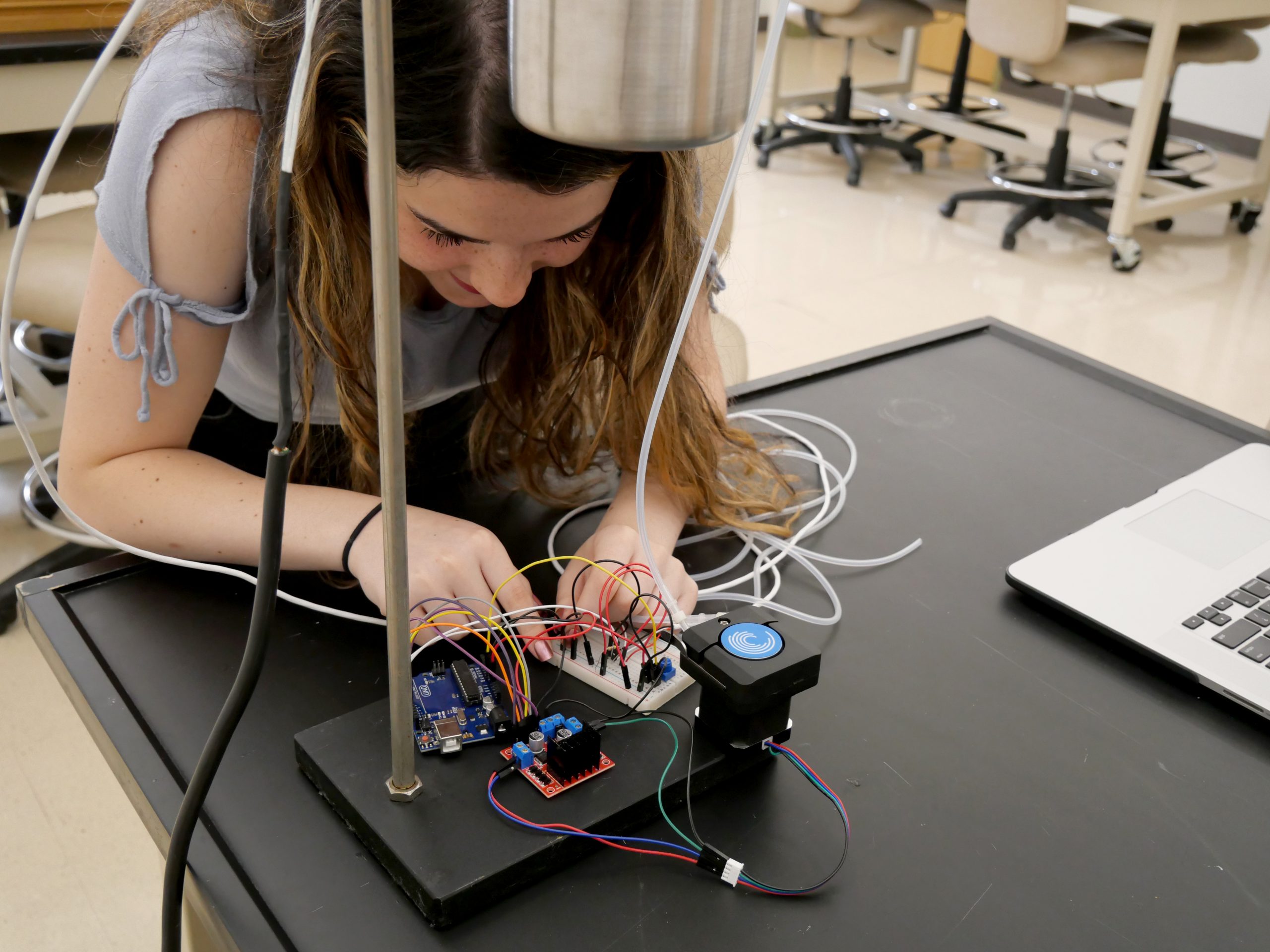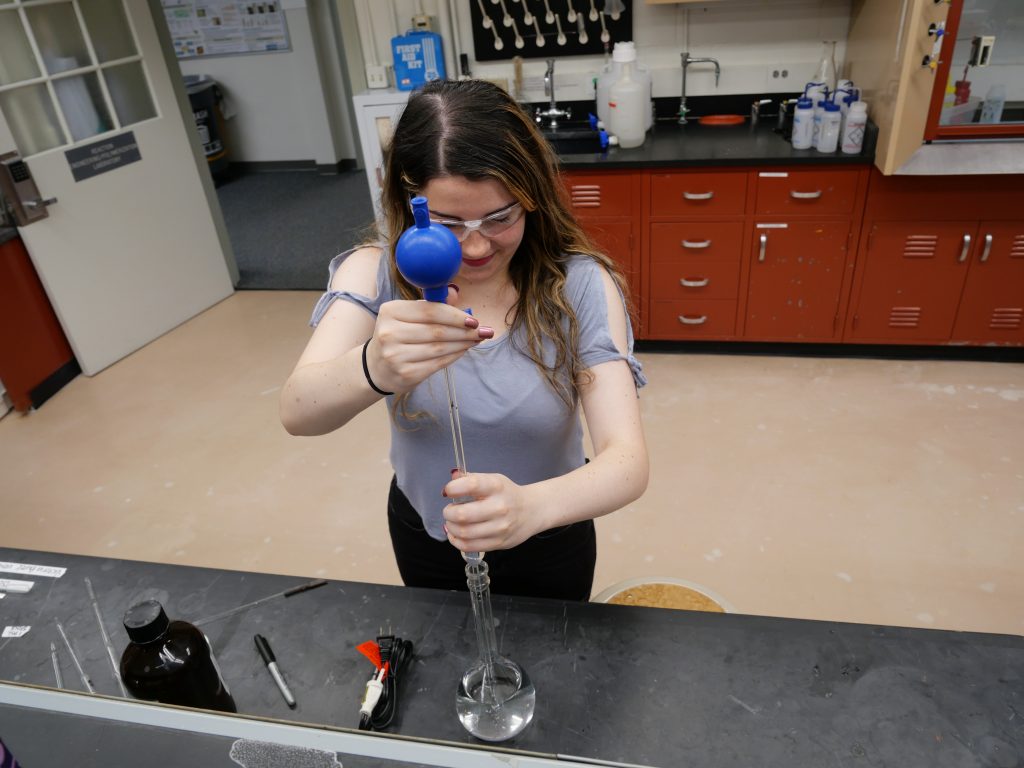
You are likely part of coffee’s third wave of consumption. What started out as simply drinking Folgers or another mass-market coffee at home and evolved to the Dunkin’ drive thru or a complicated Starbucks order is now at a stage where consumers are emphasizing high-quality coffee.
An avid coffee drinker, Victoria Burek ’26, chemical engineering, is spending her summer on Bucknell’s campus creating, coding and researching to make the coffee drinking experience even better. Under the direction of Prof. Kat Wakabayashi, she is building a prototype coffee brewer that will provide a consistent water temperature and consistent water flow rate, leading to a better tasting coffee. At the same time, Burek is using her analytical chemistry skills — before she even takes the class this coming fall — to investigate the amount of caffeine in coffee based on multiple variables.
Burek is from Staten Island, New York, and will remain on campus through the end of July. She plans to have a final prototype of the coffee brewer by summer’s end, with many of the components made out of glass to provide a “wow” factor.
Keys to the success of the coffee maker include keeping the water temperature consistently between 99 and 100 degrees celsius and the flow rate between 0 and 10 grams per second. An immersion heater and temperature sensor ensure the correct temperature, while Burek added a hard-to-find pump with an advertised flow rate of below 12 grams per second to the machine.
Burek — who is interested in a computer science minor — has used her coding skills to add an Arduino to the system. She has programmed and connected all components of the coffee maker to the Arduino using color coded wiring.

“I download some starter code and tweak it,” says Burek. “It isn’t too bad. One had about 40 lines. But there can be a lot of trial and error when coding.”
After the water reaches its ideal temperature, it is pumped through a tube, which regulates flow rate to the bed of coffee grounds. Burek is still testing and may need to add insulation to the tubing if the water temperature does not stay consistent by the time it reaches the coffee grounds.
“Making sure all the components are compatible with the Arduino, keeping the entire system food safe and locating the pump to control the flow rate have been my biggest challenges,” says Burek. “Most pumps have a flow rate well above what I was looking for, but I finally found one after more than a week of looking.”
Burek has immersed herself in the world of coffee this summer and is investigating how the brewing method and type of bean roast impacts the amount of caffeine in a cup of coffee. She started by testing the amount of caffeine in a methanol and water solution and will eventually transition to coffee, utilizing Bucknell’s High Performance Liquid Chromatography (HPLC) machine and the assistance of environmental engineering and science lab director Monica Hoover.
“My hypothesis is that the lighter roast coffee will have more caffeine, which is different than the prevailing thought,” says Burek.
Thanks to Burek’s work this summer, you may soon have better tasting coffee and know exactly what coffee to drink when you need a pick-me-up or which one to drink when bedtime is approaching.

